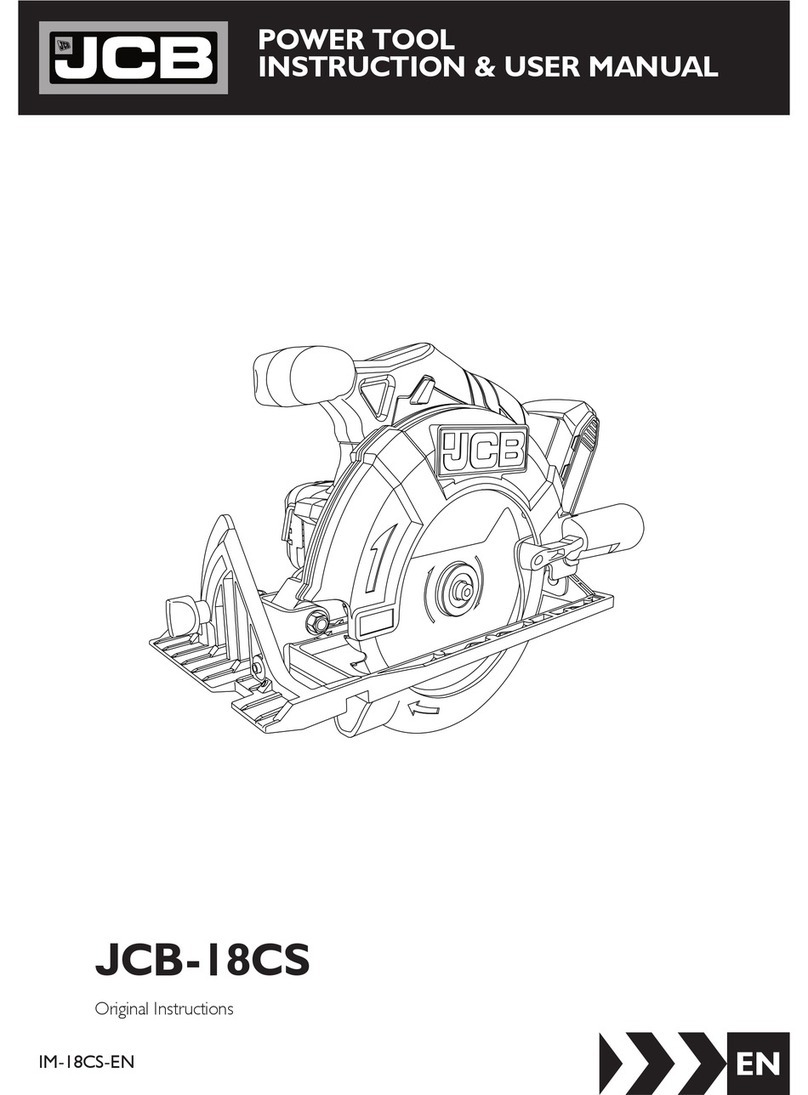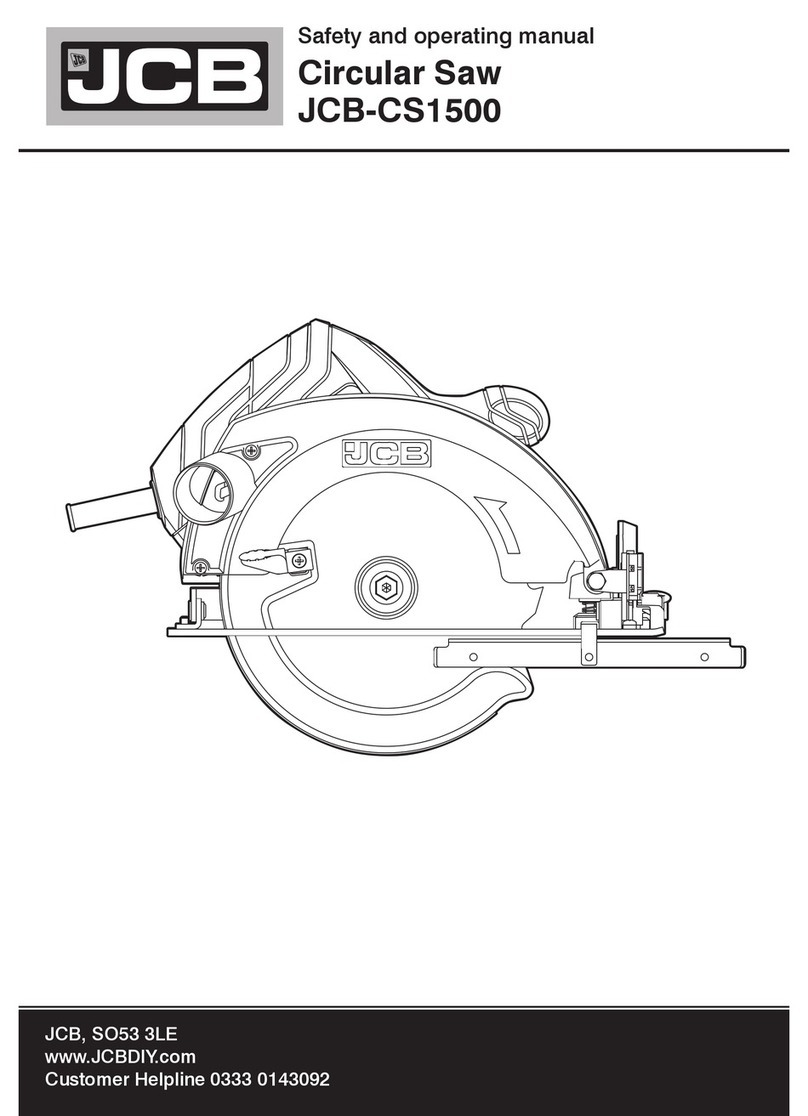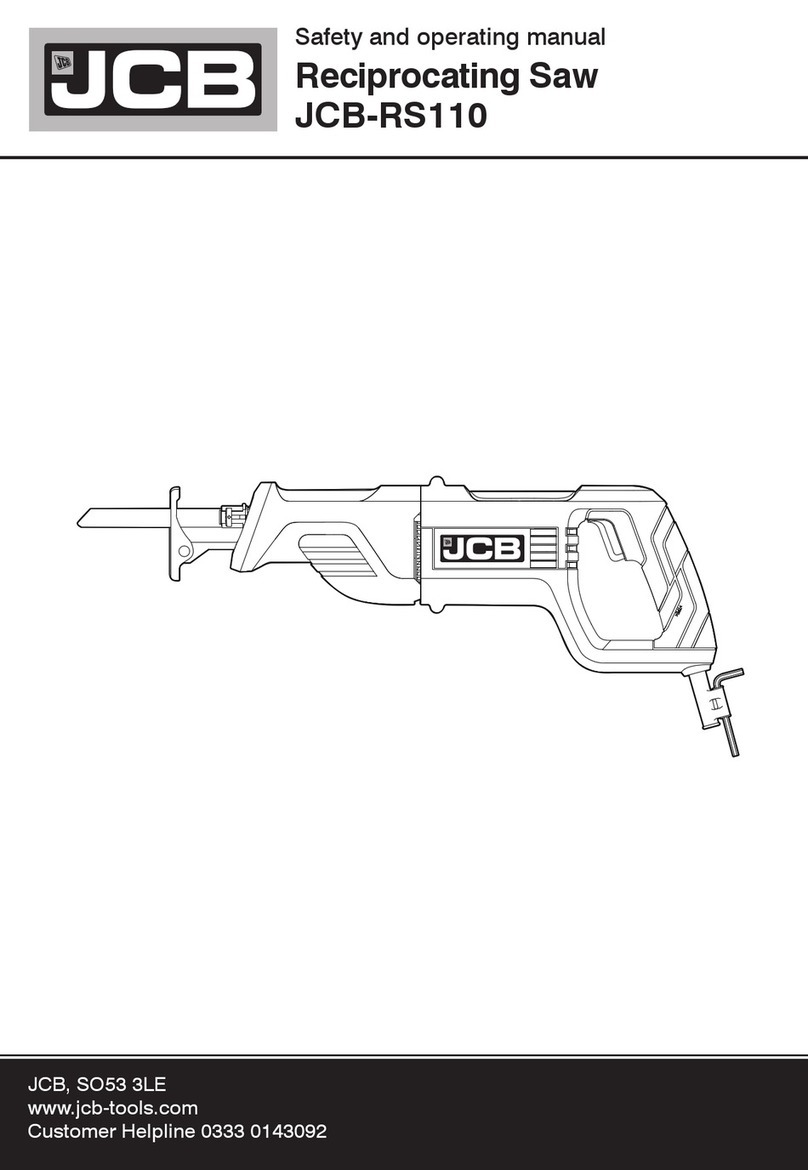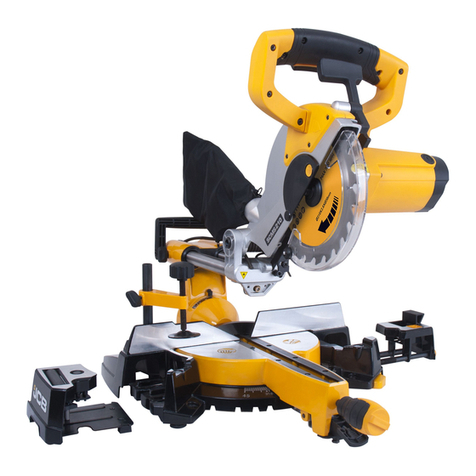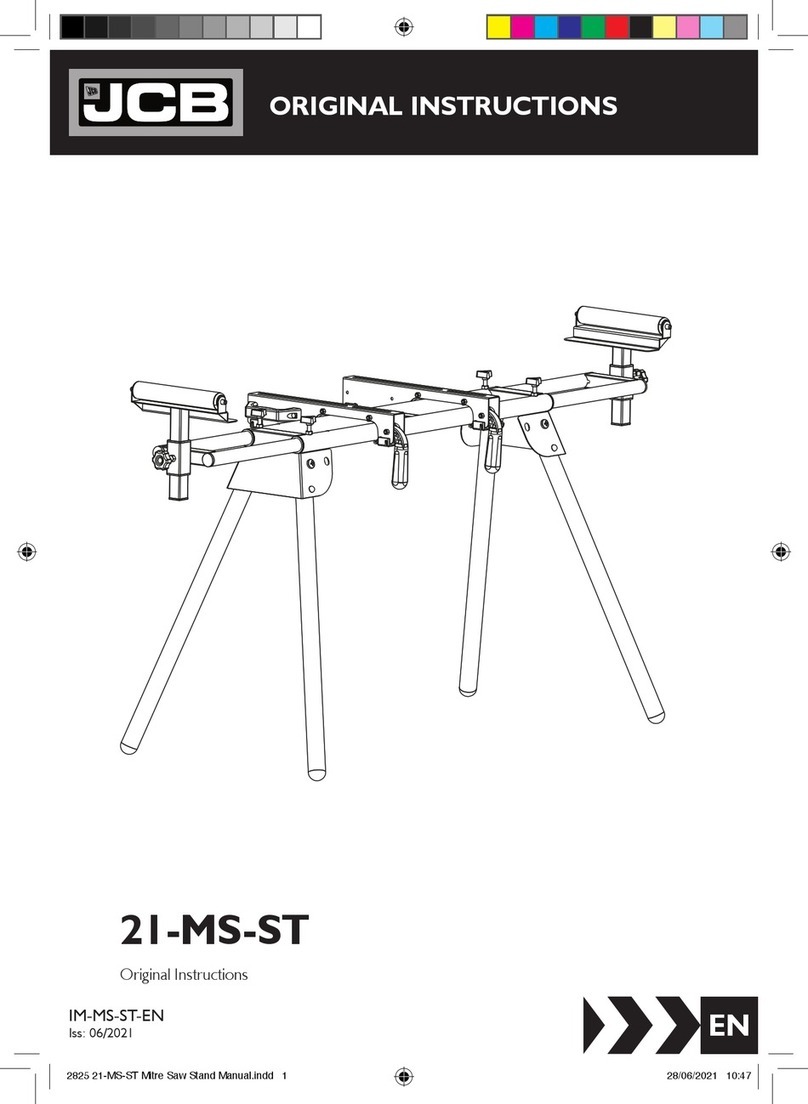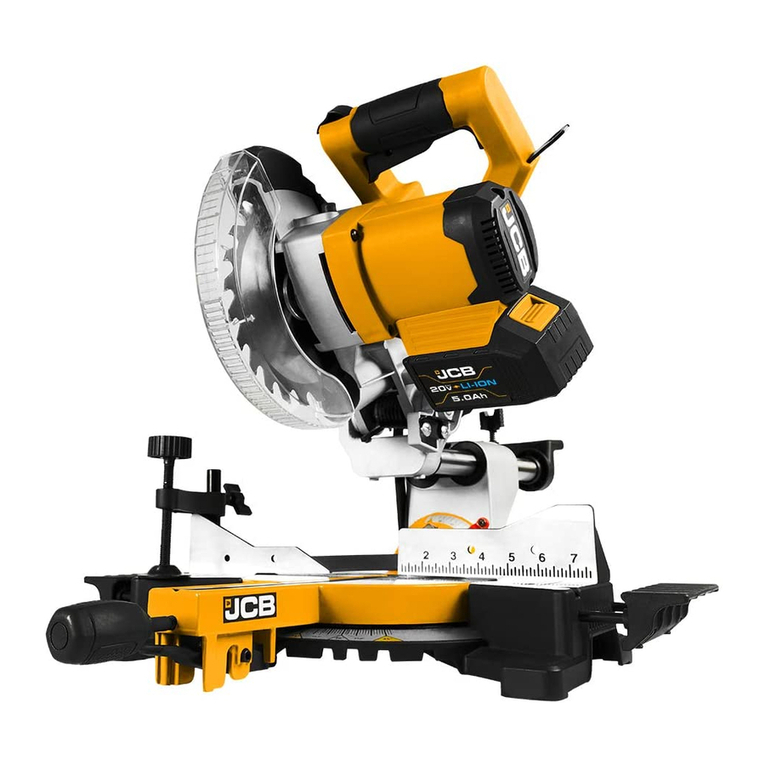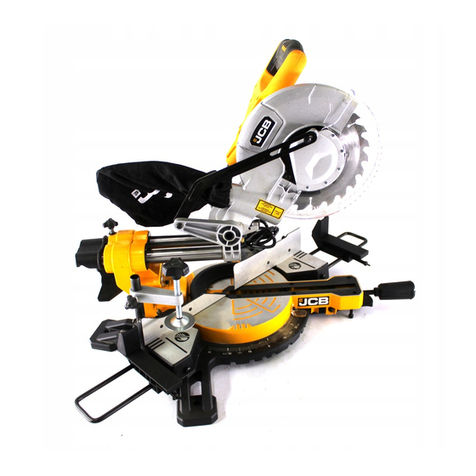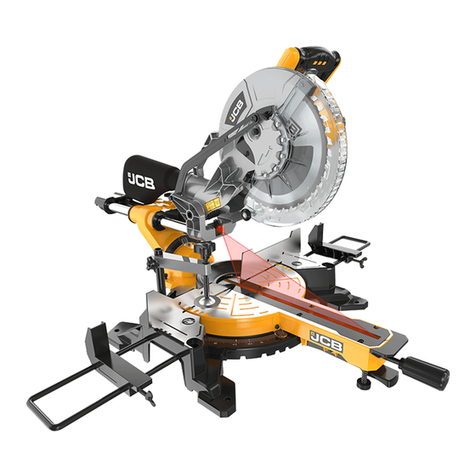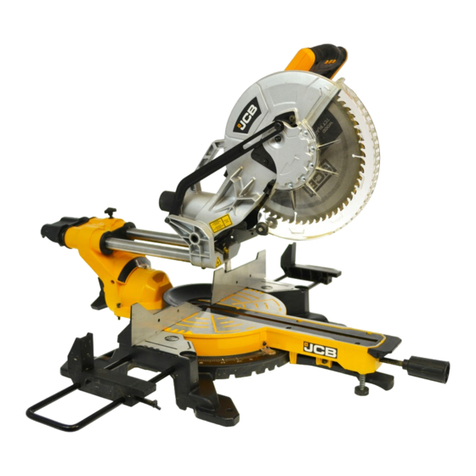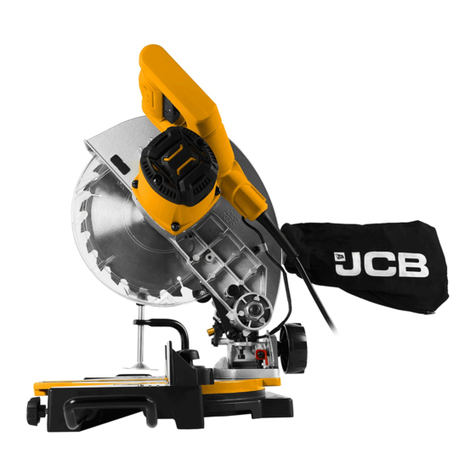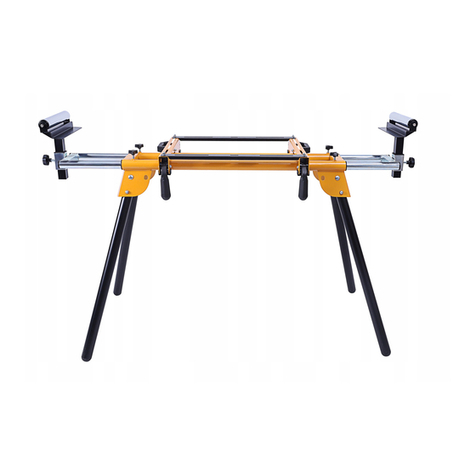
6JCB-MS-305SB-L
Instruction & User Manual
– Use of the power tool for operations
different from intended could result in a
hazardous situation.
hKeep handles and grasping surfaces
dry, clean and free from oil and grease.
–Slippery handles and grasping surfaces do not
allow for safe handling and control of the tool
in unexpected situations.
5Service
aHave your power tool serviced by
a qualified repair person using only
identical replacement parts.
–This will ensure that the safety of the power
tool is maintained.
SAFETY INSTRUCTIONS FOR MITRE
SAWS
1Mitre saws are intended to cut wood
or wood-like products, they cannot be
used with abrasive cut-off wheels for
cutting ferrous material such as bars,
rods, studs, etc.
–Abrasive dust causes moving parts such as
the lower guard to jam. Sparks from abrasive
cutting will burn the lower guard, the kerf
insert and other plastic parts.
2Use clamps to support the workpiece
whenever possible. If supporting the
workpiece by hand, you must always
keep your hand at least 4” (100 mm)
from either side of the saw blade. Do
not use this saw to cut pieces that are
too small to be securely clamped or
held by hand.
–If your hand is placed too close to the saw
blade, there is an increased risk of injury from
blade contact.
3The workpiece must be stationary
and clamped or held against both
the fence and the table. Do not feed
the workpiece into the blade or cut
“freehand” in any way.
– Unrestrained or moving workpieces could be
thrown at high speeds, causing injury.
4Push the saw through the workpiece.
Do not pull the saw through the
workpiece. To make a cut, raise the
saw head and pull it out over the
workpiece without cutting, start the
motor, press the saw head down and
push the saw through the workpiece.
–Cutting on the pull stroke is likely to cause the
saw blade to climb on top of the workpiece
and violently throw the blade assembly
towards the operator.
5Never cross your hand over the
intended line of cutting either in front
or behind the saw blade.
–Supporting the workpiece“cross handed” i.e.
holding the workpiece to the right of the saw
blade with your left hand or vice versa is very
dang erous.
6Do not reach behind the fence with
either hand closer than 4” (100 mm)
from either side of the saw blade, to
remove wood scraps, or for any other
reason while the blade is spinning.
–The proximity of the spinning saw blade to
your hand may not be obvious and you may
be seriously injured.
7Inspect your workpiece before cutting.
If the workpiece is bowed or warped,
clamp it with the outside bowed
face toward the fence. Always make
certain that there is no gap between
the workpiece, fence and table along
the line of the cut
–Bent or warped workpieces can twist or shift
and may cause binding on the spinning saw
blade while cutting. There should be no nails
or foreign objects in the workpiece.
